(1798-1860)
Houses on the banks of the river
Oil on paper mounted on wood
H. 24 cm; W. 34 cm
Number on the back in red chalk: No. 8
Around 1830
Jules Coignet entered the studio of Jean-Victor Bertin around 1819. However, he quickly distanced himself from the historical landscape practiced by his master and painted views of nature from the motif; before the Barbizon school, he was one of the first to paint in the forest of Fontainebleau. After unsuccessfully attempting to compete for the Grand Prix de Rome for historical landscape, he spent a few years in Italy and Sicily, and sent views to the Salon in 1824. This was the beginning of a long series of trips that took him to all regions of France, but also to Egypt, Syria, Asia Minor, the Tyrol and again to Italy between 1840 and 1843. From his travels, he brought back enough to publish several collections of lithographs. He also devoted two illustrated albums to the technique of landscape painting from nature, which he taught to many students. Although he was one of the most renowned landscape artists of his time, Jules Coignet was criticized after his death, the "moderns" seeing him as nothing more than a pale emulator of Corot. He has recently been rehabilitated thanks to exhibitions such as Paysages d'Italie (Grand Palais, 2001). He is now re-inscribed in the movement of pioneering artists who, from Pierre-Henri de Valenciennes to Camille Corot, practiced open-air painting well before Impressionism, developing a more direct approach to landscapes: "He shows nature as it is," wrote Vincent Pomarède, "in a contemporary way, basing the purity of his art on a great freedom of touch, associated with uncompromising rigor." (catalogue Paysages d'Italie, page 169). Despite his presence in many museums, a large part of his work remains to be discovered.
Painted with a light brush, using washes reminiscent of watercolors, this view of a village on the banks of a river recalls several of the painter's works with tight compositions. The architecture of these half-timbered houses is complex to replace. The mixed slate roofs and the red tint of the buildings make us think of an area like Aveyron where there are charming villages like Espalion or Estaing. 0 left of the composition cypresses rise in the background, which are difficult to imagine in Normandy or Brittany, areas where these painters passed. Some elements stand out in relation to Coignet's work, mainly the vegetation, which he treats in a more fine and precise manner. We add some images of related works by Coignet to illustrate our connection.






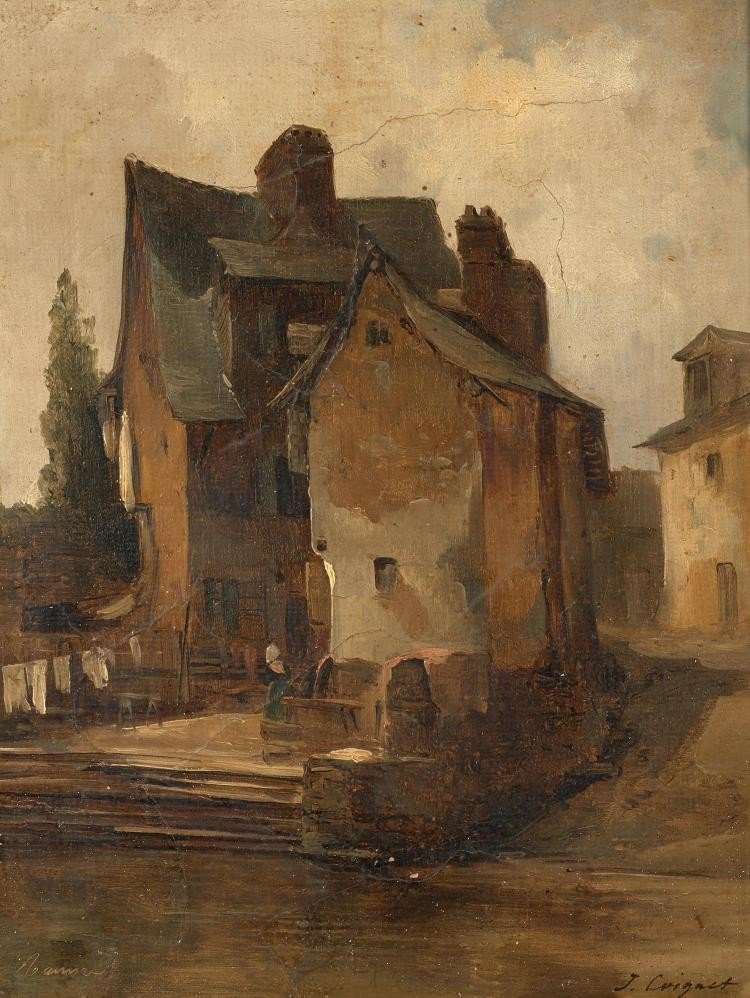










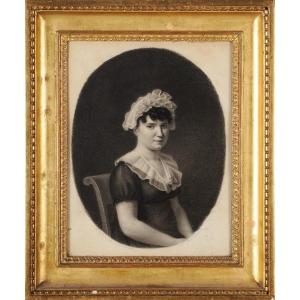


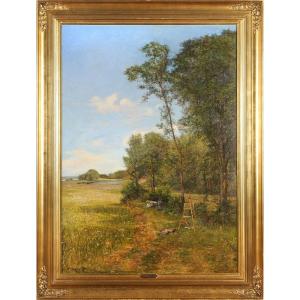
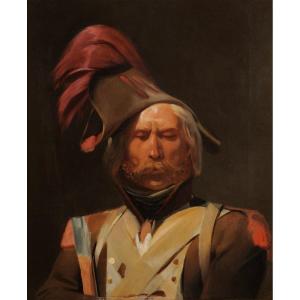



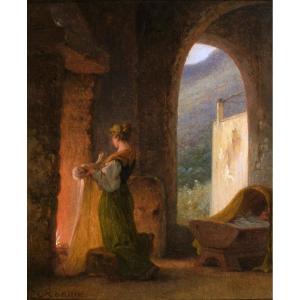

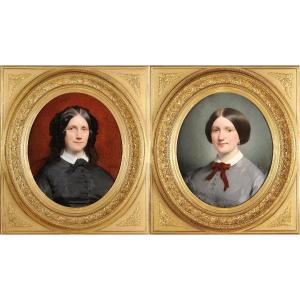


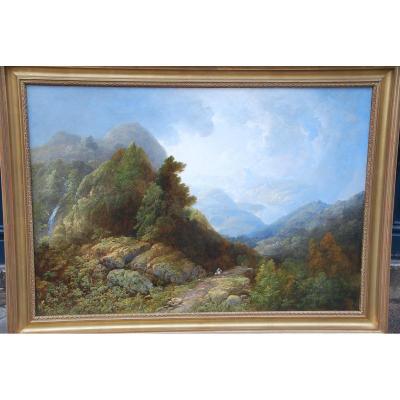



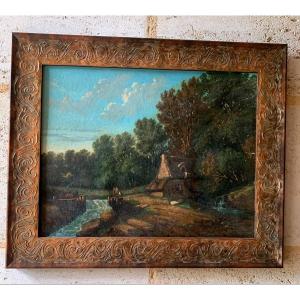



 Le Magazine de PROANTIC
Le Magazine de PROANTIC TRÉSORS Magazine
TRÉSORS Magazine Rivista Artiquariato
Rivista Artiquariato